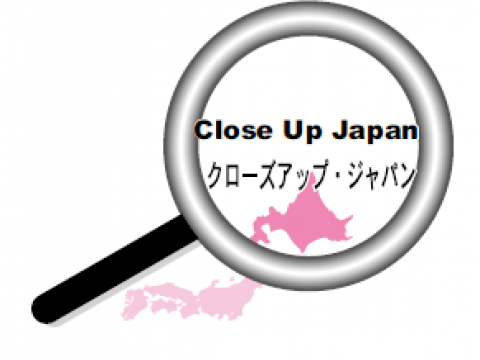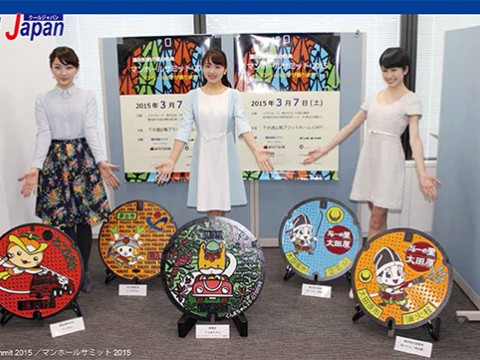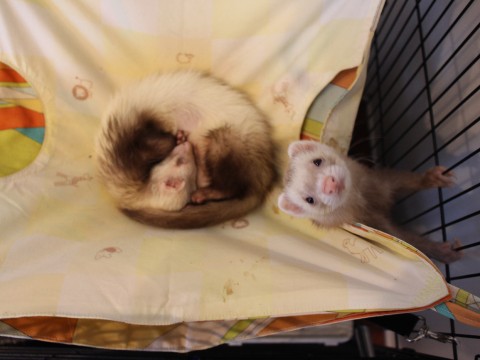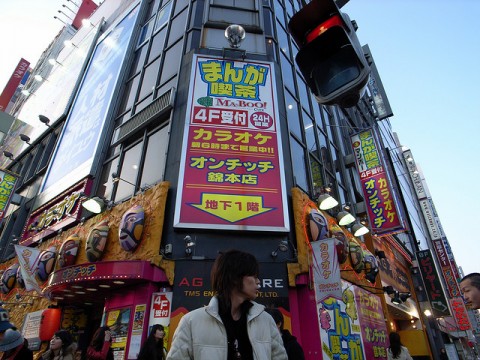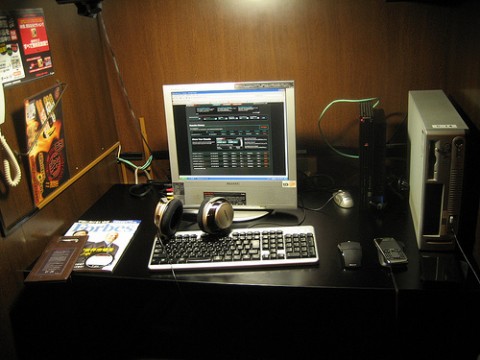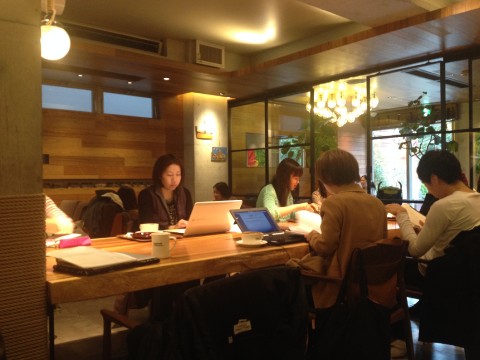Craze for Friendly and Cute Rabbits
T he rabbit is a popular animal in Japan. Many rabbits show up in Japanese fairy tales and children’s stories. Wild rabbits can’t be seen in the center of large cities, but most pet shops have rabbits. In order to get closer to them, some people go to rabbit cafes or visit an island that is home to large numbers of rabbits.
At the With Bunny cafe in Asakusa, Taito City, Tokyo Prefecture, people go to see, play with, and learn about different types of rabbits. In the five-story building, customers can spend time with whichever rabbit appeals to them. On the walls are photos of rabbits and posters in Japanese and English explaining their behavior and how to rear them. On the rooftop, there’s a vegetable garden in which basil and Brussel sprouts are planted. You can watch the rabbits eating them and burrowing into the soil. As toys are provided for the rabbits, it’s possible to watch them playing; pushing balls around and so forth. Rabbit-related merchandise is also on sale.
At the time of writing, the cafe has 26 rabbits of eight different species. “We also have quite a few non-Japanese customers,” says the owner KAWAOKA Tomoyuki. “It seems that some foreign tourists visiting Asakusa Temple nearby stopped in and spread the word through social media. I get the impression that the friendliness and intelligence of rabbits is refreshing to people from countries where rabbits are not commonly kept as pets, or where it’s forbidden to keep rabbits.”
Nicolas House is a rabbit-themed cafe in Shibuya City, Tokyo Prefecture. Customers don a pair of bunny ears when they enter the cafe here – which is decorated with stuffed toy rabbits and paintings of rabbits. Several types of bunny ears are available on loan and customers who visit frequently can borrow ones with lots of flowers and ribbons.
Items on the cafe’s menu include a rabbit-shaped parfait, cream puffs, and a French dish served in the shape of a rabbit’s face. In addition to products with rabbit motifs, the cafe sells rabbit-shaped cream puffs and crepes made in-store. The sweets and dishes are original recipes created by Nicolas CHARLES, a French chef who once worked for a one-Michelin-star restaurant.
Nicolas himself serves customers, often wearing a pair of bunny ears. “Rabbits are the reason I came to Japan,” says Nicolas.
“When I was a child, my mother bought me a calendar with Japanese motifs, such as Mt. Fuji, on it. A picture of cherry blossoms and a white rabbit attracted me so much that I hoped to come to Japan one day and ended up settling down here. That’s why I continue to make the dishes and sweets of France, my mother country, in the shape of rabbits.”
////////////////////////////////////////////////////////////////////////////////////////////////////////////////////////
30 years in Japan
The monthly magazine that introduces the real Japan
to the world, in English and Japanese
Click here to Know about "HiraganaTimes"
→http://www.hiraganatimes.com/
Open new window
///////////////////////////////////////////////////////////////////////////////////////////////////////////////////////////

HiraganaTimes
Japan






